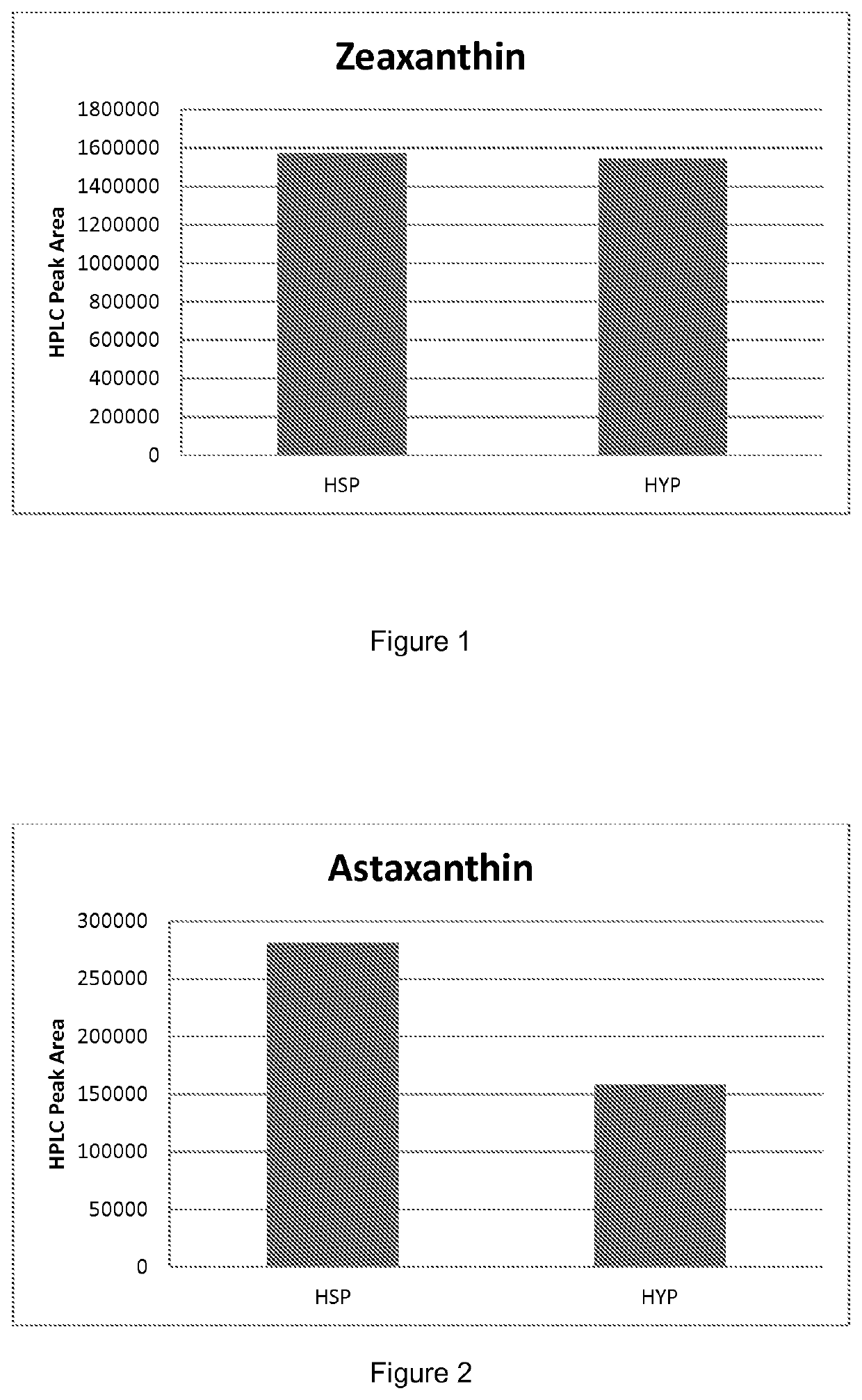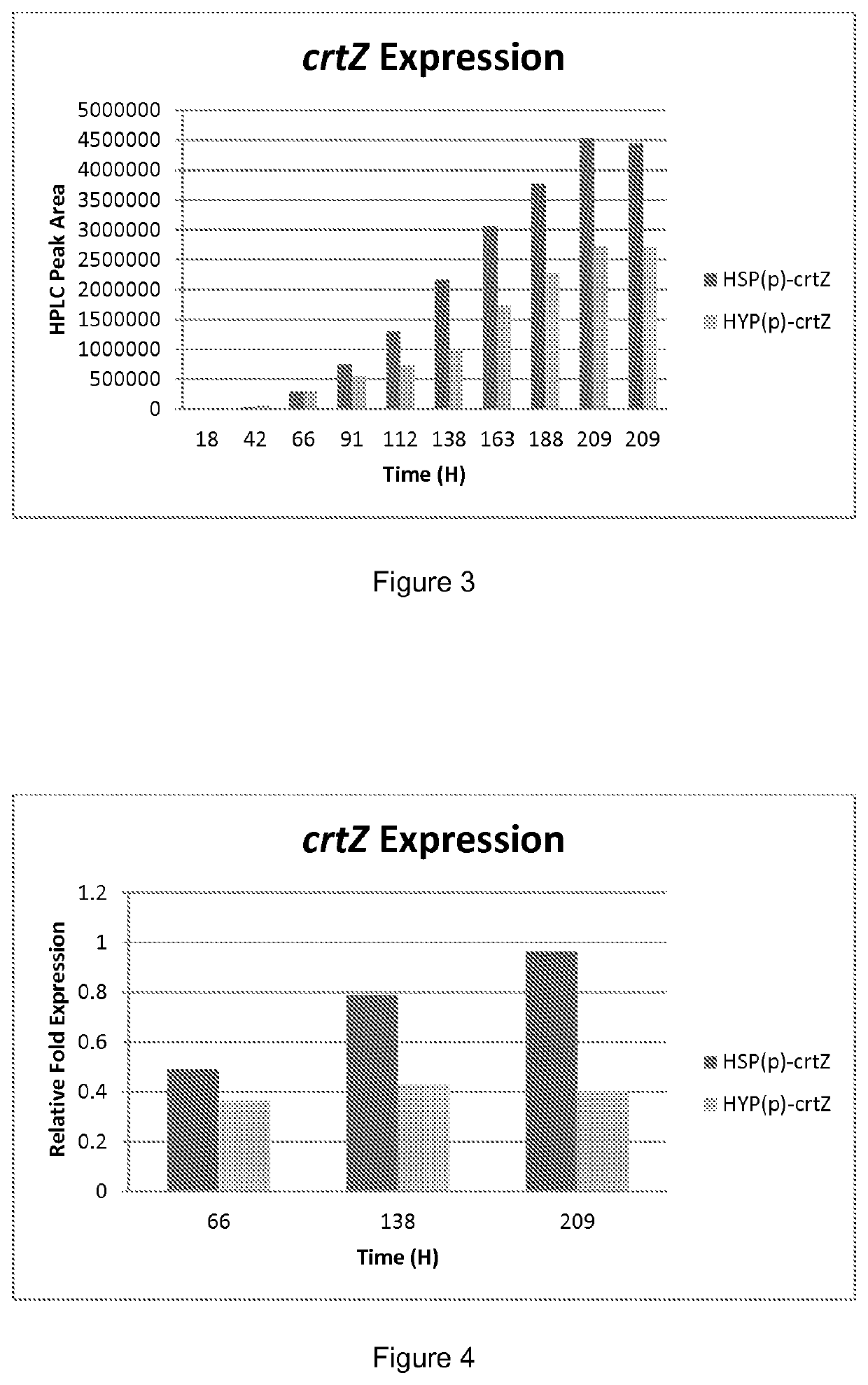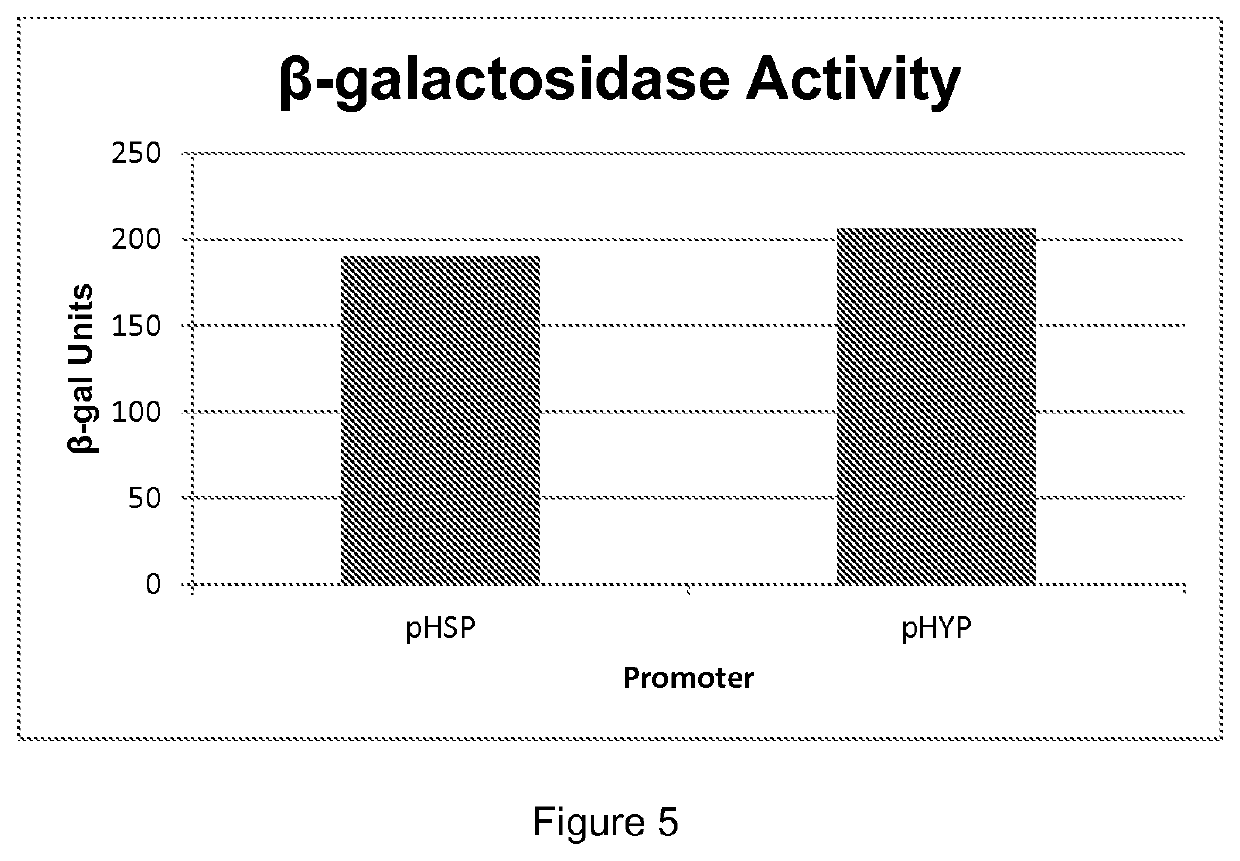Promoters suitable for heterologous gene expression in yeast
a technology of promoters and yeast, applied in the field of new products, can solve the problems that the promoters used to date cannot, however, fully satisfy the requirement for high expression
- Summary
- Abstract
- Description
- Claims
- Application Information
AI Technical Summary
Benefits of technology
Problems solved by technology
Method used
Image
Examples
example 3
n Production
[0155]pMB6056, pMB6504 and pMB6509 were cleaved with NotI and independently transformed into ML2461, a beta carotene producer, and into ML6804, a canthaxanthin producer. Transformants were selected on YPD supplemented with 100 mg / L hygromycin B. They were incubated for 48 h at 30° C. Colonies were picked to YPD agar supplemented with 100 mg / L hygromycin B.
[0156]Cultures of these transformants were grown for 72 h at 30° C. in 800 μL YPD in 2 mL round bottom 24 well plates and shaken at 800 rpm in an INFORS Multitron. For extraction, 250 μL was sampled into 2 mL Eppendorf Safe-Lock™ tubes (022363352). Approximately 600 μL of 0.5 mm dia. Zirconia / Silica beads (BioSpec Products Cat. No. 11079105z) was added to each sample. Cells were disrupted in a Resch MM300 beadmill (setting 20) for 5 min at 4° C. in heptane:ethylacetate (1:1 v:v), and centrifuged for 5 minutes. Multiple rounds of extraction were carried out until the extract was colorless, indicating exhaustion of carote...
example 4
in Production
[0158]Cultures derived from transformants of ML6804 were grown, sampled and extracted as above. FIG. 2 shows carotenoid levels, depicted as HPLC peak area, in ML6804 transformed with HSP or HYP promoters driving crtZ expression. Average expression of 12 transformants each for HSP and HYP in shake flasks is shown.
example 5
ession in Fermentors for Astaxanthin Producers
[0159]In order to examine the expression of the above described heterologous constructs under fermentor conditions, the astaxanthin-producing strains created in Example 4 were grown in a fermentor using a fed-batch process conducted in a 3 L bench-scale fermentor. The initial batch phase medium contained 10% soybean oil (vol:vol) as the primary carbon source. During the batch growth phase, biomass level (dry cell weight) reached a maximum, and Yarrowia cells accumulated a large internal lipid body. After the initial batch had been consumed, a rapid rise in the fermentor dissolved oxygen level was observed. At that time, a feed of soybean oil was started, with the feed addition rate controlled to maintain the fermentor dissolved oxygen level at 20% of saturation. An aliquot of 25 μL was sampled at time points indicated in FIG. 3 and carotenoids extracted as above. For RNA analysis, fermentors were sampled one at a time to minimize the tim...
PUM
| Property | Measurement | Unit |
|---|---|---|
| pH | aaaaa | aaaaa |
| nucleic acid | aaaaa | aaaaa |
| pH | aaaaa | aaaaa |
Abstract
Description
Claims
Application Information
 Login to View More
Login to View More - R&D
- Intellectual Property
- Life Sciences
- Materials
- Tech Scout
- Unparalleled Data Quality
- Higher Quality Content
- 60% Fewer Hallucinations
Browse by: Latest US Patents, China's latest patents, Technical Efficacy Thesaurus, Application Domain, Technology Topic, Popular Technical Reports.
© 2025 PatSnap. All rights reserved.Legal|Privacy policy|Modern Slavery Act Transparency Statement|Sitemap|About US| Contact US: help@patsnap.com



